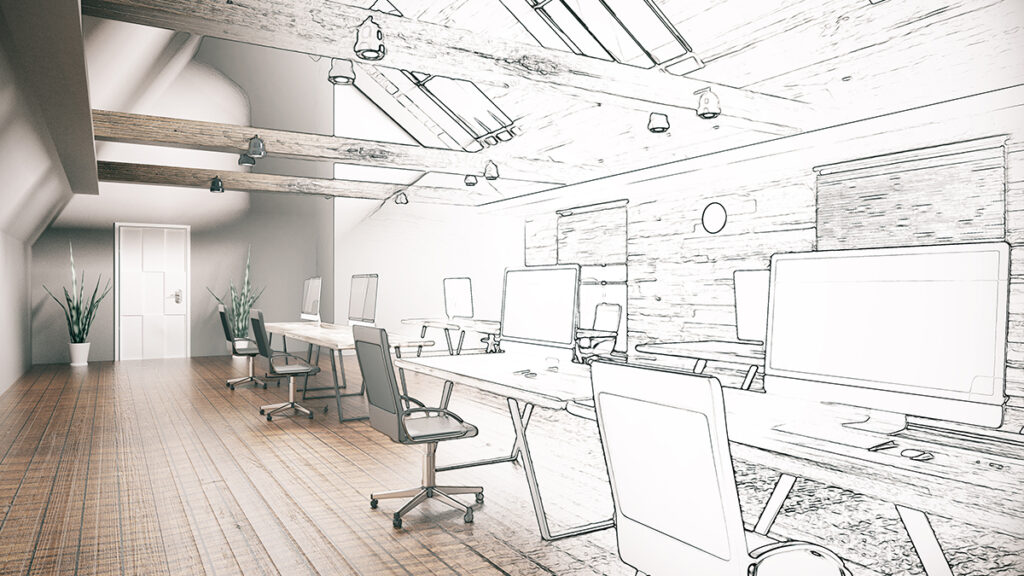

Contributed by Lisa Sauvé, CEO, principal, and co-founder of Synecdoche Design.
When I first started Synecdoche Design, an Ann Arbor-based design-make architecture studio, I never imagined that a few years later we’d be in the midst of a global pandemic. Now, I’m constantly thinking about the short- and long-term needs and challenges that need to be addressed before people can return to work. Here are some areas of consideration and tactics for workspace adjustments.
Reduce Density and Enlarge Individual Spaces
- Use amenity and auxiliary space to redistribute primary use furniture. Convert rooms like cafeterias and meeting rooms to spread out desks and private offices.
- Review annual budget and space needs. Plan for long-term changes to real estate needs. Will your company require more square footage for distancing or will you scale back certain amenities — like common spaces and lounges. Will working from home become a long-term policy and if so, will your company end up reducing its space?
- Consider ‘conflict points’ like a traffic plan — accidents happen at intersections. Identify areas like the water cooler, coffee station, and printer area where people may have a hard time distancing from each other and set up additional stations throughout the office. For larger offices, having one-way corridors with directional signage helps reduce this, too.
- Create and share a pace plan for personal workspace and movement. A blueprint that shows non-conflicting 6′ diameter spaces that also includes space for travel paths is important. If getting to a desk requires encroaching on another team member’s space, then the plan has not fully considered the density and spatial relationships.
Work from Home and Block+Shift Schedules
- Stagger the seating plans. If space allows, employees at every other desk, every other day enables teams to connect at the office while maintaining personal distance without a full rearrangement of furniture.
- Convert meeting rooms to virtual conference space. Those who work from home can connect with the team by having open workspaces equipped with cameras and microphones.
- Block off downtime in meeting rooms. A 30-60 min gap between meetings can ensure that if a meeting runs over, teams are not trying to get in and out of the same door in a small margin of time. It can also allow HVAC systems to circulate fresh air in the space and allow for teams a clean time before and after meetings.
Divide Existing Layout
- Open spaces separated from aisles. Open lounges can be great new meeting spaces by creating barriers between the space and a corridor with rolling whiteboards. Depending on the size, they can work as room partitions while being cleanable and functional.
- Separate in common areas. While workstation partitions are typical products by a desk manufacturer, dividers for community dining tables and meeting rooms are not a typical furniture catalog item. Get creative with cardboard or custom items, allowing flexibility for employees to adjust and define their own zone helps give a sense of control and agency.
- Add moveable partitions. Synecdoche is working with local plastics and metal manufacturers to create a useful yet playful work wall that employees can carry around the office to provide division in multiple spaces.
We are already seeing furniture suppliers working with an international network of manufacturers to create quick turnaround products as a stopgap to the current situation. While it’s important to tool-up for the new workplace environment, it’s also important to know what efforts are short-term, and what could be long-term benefits. With companies being conservative with cash-flow, it’s important to include as many useful components into a product as possible. I’ve seen our community thrive with this type of support and innovation. It’s been rewarding to participate in the development of products that get us back to work.
